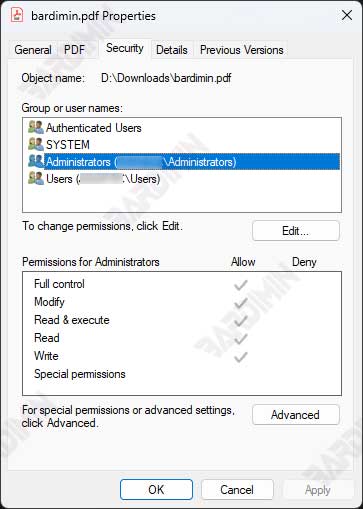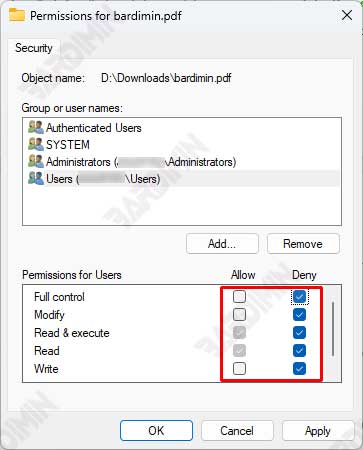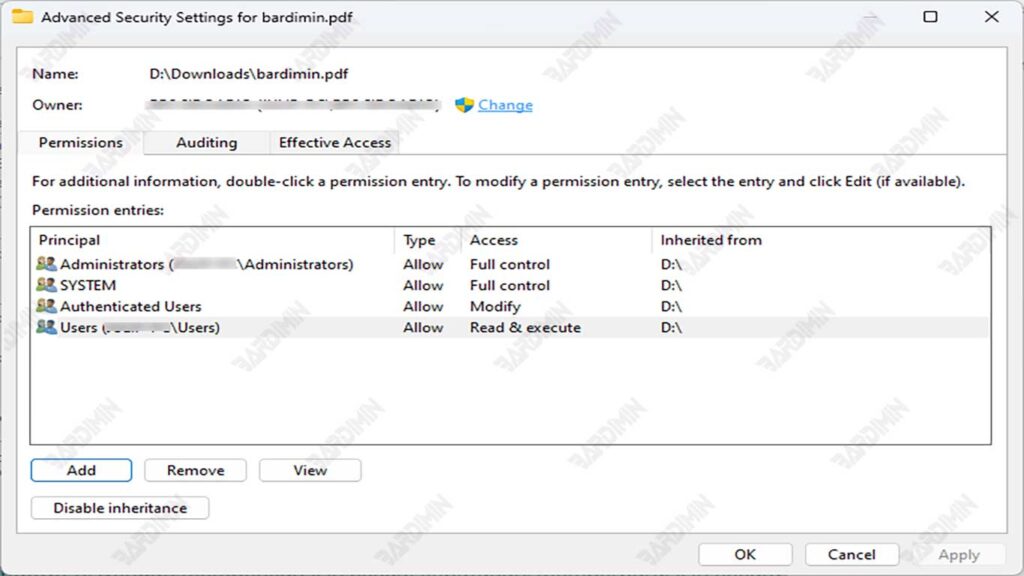How to View and Change Permissions
Steps to access the permissions menu via Properties:
- Right-click on the disk, folder, or file you want to set permissions for
- Select “Properties” from the context menu
- Click the “Security” tab in the Properties window

Explanation of the Security tab and the available options:
- The Security tab displays the groups of users who have permissions on the selected object
- You can select a user group to check what permissions they have
- The “Edit” button allows you to change permissions for selected user groups
Editing Permissions for Users
To add or remove permissions for a user group:
- Select the user group whose permissions you want to change
- Click the “Edit” button
- In the Edit window, you can choose to add or remove permissions
- Click “Apply” to assign a new permission

The importance of ensuring users have the right permissions:
- Grant permissions according to the user’s needs, no more or less
- The right permissions will increase productivity and minimize security risks
Advanced Permission Settings
Explanation of the Advanced option and its use:
- Click the “Advanced” button on the Security tab to access advanced settings
- Advanced Security Settings window provides more granular control
- You can set permissions for the current folder, subfolders, or files only

Examples of situations where advanced permissions are required:
- When it is necessary to set permissions more specifically, such as only for certain files
- When you need tighter control over access to resources
Common Mistakes in Permit Management
While permission management in Windows 11 is very important, there are some common mistakes that users often make. Here is a discussion about these mistakes along with tips to overcome them:
Granting Permission That Is Too Loose
- Error: Excessively granting Full Control permissions to users who don’t need them.
- Impact: Increases security risk if a user’s account is misused.
- Tip: Grant permissions based on the user’s minimum needs, such as Modify or Read. Avoid granting Full Control permissions unless necessary.
Not Renewing Permissions
- Error: Didn’t change permissions when a user switched tasks or left the organization.
- Impact: Users can continue to access data even if they no longer need it.
- Tip: Regularly check and update user permissions as needed. Remove permissions for users who are no longer active.
Setting Permissions at the Wrong Level
- Error: Assigning permissions at the wrong level, such as setting permissions on the root disk.
- Impact: This may cause problems with the operating system if permissions are incorrect.
- Tip: Set permissions to the lowest possible level, such as on individual folders or files. Avoid setting permissions at the disk or volume level.
Not Understanding Permission Inheritance
- Error: Doesn’t understand the concept of permission inheritance from folders to subfolders and files.
- Impact: Inconsistent permissions can cause access issues.
- Tip: Understand the concept of permission inheritance and use advanced settings if necessary to set permissions specifically.
Conclusion
Proper permission management is essential for maintaining data security and integrity in Windows 11. By granting permissions as needed, updating permissions regularly, and understanding the concept of permission inheritance, you can avoid common mistakes in managing permissions. Implement best practices in permission management to ensure your systems are secure and productive.
